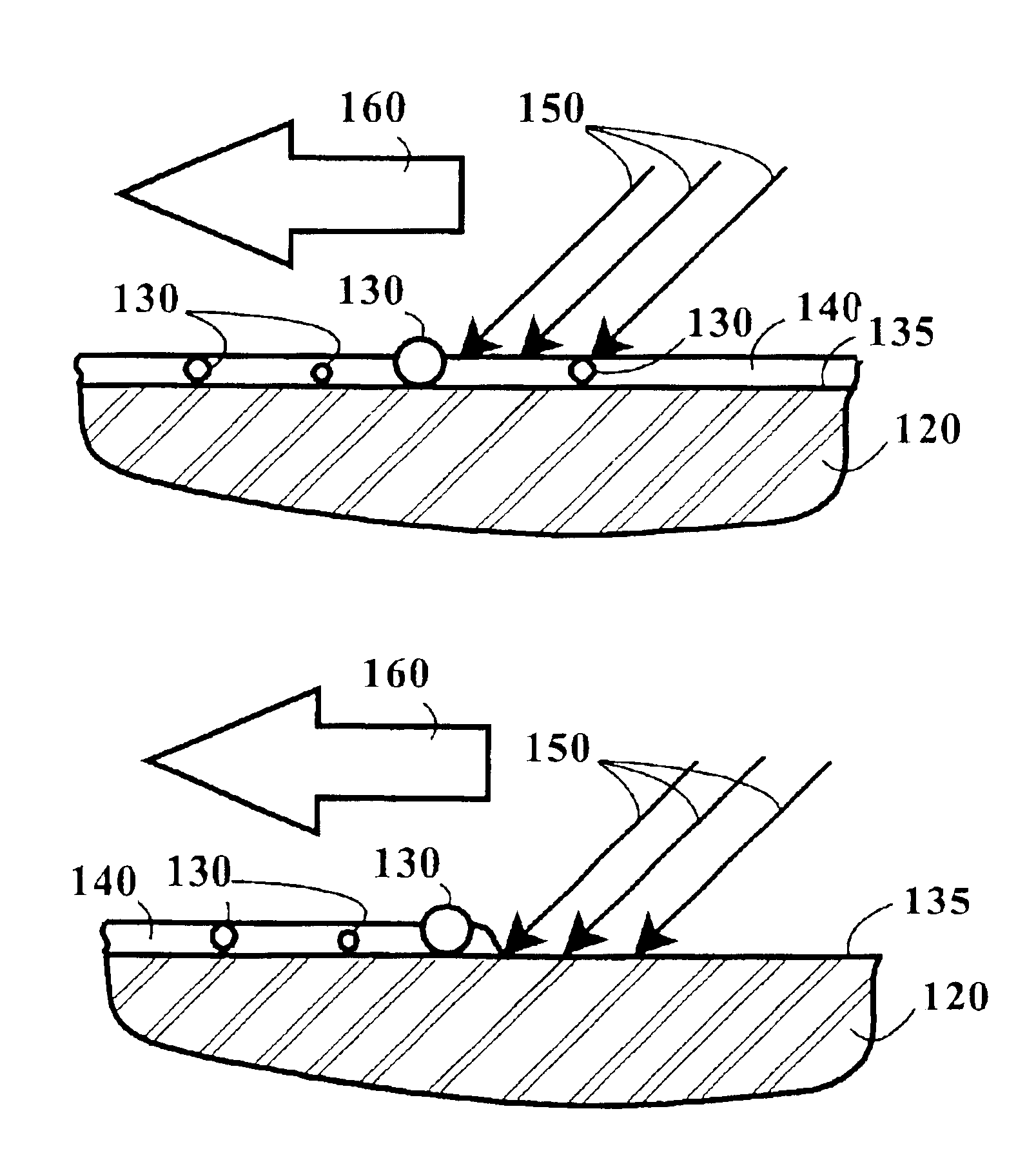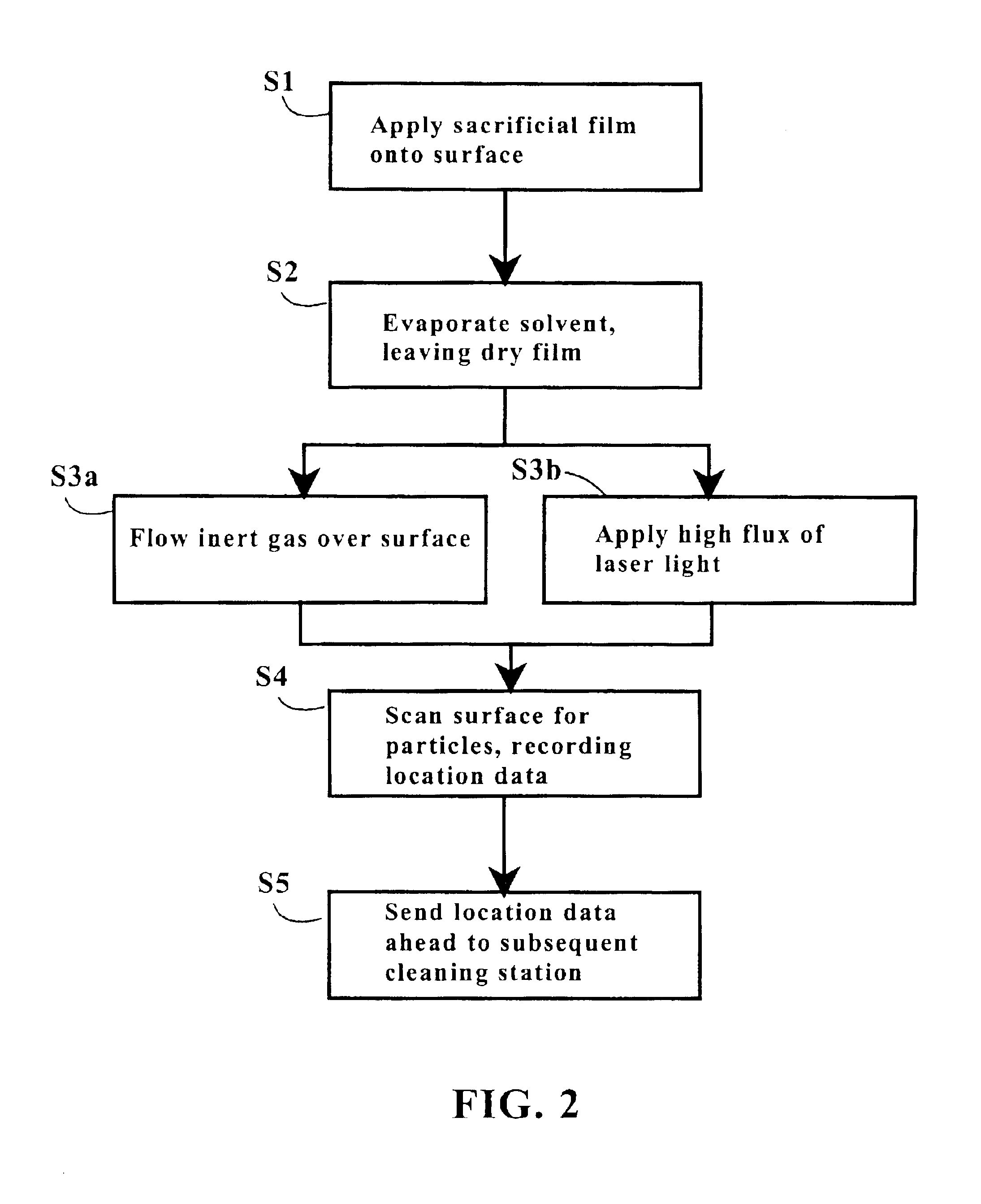Method for laser cleaning of a substrate surface using a solid sacrificial film
- Summary
- Abstract
- Description
- Claims
- Application Information
AI Technical Summary
Benefits of technology
Problems solved by technology
Method used
Image
Examples
Embodiment Construction
Description of Preferred Embodiment
[0043]The invention employs in part a process (hereafter “Radiance Process”), described in U.S. Pat. No. 5,024,968 to Engelsberg et al., which is based upon the principles of quantum physics rather than chemistry for wafer cleaning purposes. Related methods are described in U.S. Pat. Nos. 5,099,557, 5,531,857, 5,643,472, 5,800,625, 5,821,175, and 5,958,268 to Engelsberg et al. The entire disclosures of U.S. Pat. Nos. 5,024,968, 5,099,557, 5,531,857, 5,643,472, 5,800,625, 5,821,175, and 5,958,268 are incorporated herein by reference. As used in the present invention, the Radiance Process comprises two components:
[0044](1) A photon flux is applied to the surface to be cleaned. This is usually from a deep ultraviolet excimer laser, but Nd:YAG or CO2 lasers are sometimes suitable. The light source and energy and power fluxes are determined by the combination of surface and contaminant. The photon flux provides sufficient energy to break the bonds holdi...
PUM
| Property | Measurement | Unit |
|---|---|---|
| Wavelength | aaaaa | aaaaa |
| Surface energy | aaaaa | aaaaa |
| Volume | aaaaa | aaaaa |
Abstract
Description
Claims
Application Information
 Login to View More
Login to View More - R&D
- Intellectual Property
- Life Sciences
- Materials
- Tech Scout
- Unparalleled Data Quality
- Higher Quality Content
- 60% Fewer Hallucinations
Browse by: Latest US Patents, China's latest patents, Technical Efficacy Thesaurus, Application Domain, Technology Topic, Popular Technical Reports.
© 2025 PatSnap. All rights reserved.Legal|Privacy policy|Modern Slavery Act Transparency Statement|Sitemap|About US| Contact US: help@patsnap.com



